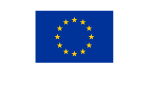Female sport reporters face floods of sexist insults over World Cup coverage
By Renata Rat – 13.06.2019
When Claudia Neumann, a German sports journalist, commentated on a World Cup football match as the first female reporter ever in 2018, she experienced a flood of heavy sexist insults via social media.

“It was just horrible”, said Neumann. Her TV channel, the German public broadcaster ZDF, even filed charges against two Twitter users.
Fast forward to 2019 where in this year’s World Cup the BBC has been accused of sexism via social media, after an all-female commentating team hosted the game England vs. Scotland and did the half-time-reports. The arguments were that there could not be equality if there are only female pundits, and no men – not taking into account that most of the half-time-reports are male only. As these examples show: as long as at least one woman is involved in the coverage of a World Cup match, it is one woman too many in the eyes of some critics. The low media profile of the 2019 World Cup and the sexist news angles chosen by editors create a hostile environment for female sports correspondents.

Article 5 of the European Charter of the Freedom of the Press says that journalists and the public must defend other journalists from harassment. According to the Organisation for Security and Co-operation in Europe (OSCE), this kind of harassment can, in extreme cases, lead to self-censorship or even to journalists retreating from the public sphere.
Female journalists as public figures are still victims of massive online harassment
They face online harassment ot only because of their work but also just because they are women. Therefore, they are facing a double burden. They receive hate speech and threats of rape and physical violence on a daily basis. In 2016, the Guardian conducted an analysis on its own website, taking into account all the comments left on the website since 2006. The result was shocking: eight of the ten most abused writers are women. According to the International Association of Women in Radio and Television (IAWRT) and the Gender Mainstreaming Project (2018), attacks on women, online abuse and harassment on social media have intensified over the years, while journalists have been particularly exposed to this type of violence. A report by Amnesty International (2017) found that women between the ages of 18 and 55 were reporting stress, anxiety, or panic attacks because of an abusive online presence. Nearly a quarter (23%) of the women surveyed in eight countries around the globe said that they had experienced online abuse or harassment at least once.
Women working in journalism should not be facing harassment that cause health issues. This is a major threat to the freedom of expression – one many people tend to forget. Any effort to silence female journalists and media professionals is a direct attack on freedom of the press.
Gender equality and the freedom from sexism both inside the newsroom and in the coverage are essential to quality and unbiased journalism. It is well known that the amount of women in newsrooms is rising, but there is also plenty of evidence that the amount of women in sports newsrooms remains very low.
A study from Eran Shor in 2018 found that an increased number of women in a newspaper’s editorial board leads to a more positive coverage of women, while the coverage of men does not deteriorate. It supports a study from Stephanie Craft and Wayne Wanta (2004) that found that newspapers with a high percentage of women in managerial positions tend to cover news in a more positive light. In addition to that, both female and male reporters tended to cover a similar agenda of issues only when they worked for newspapers with a high percentage of women in managerial positions. You can see that the coverage is dependent of the represented gender in the newsrooms – probably one of the main reasons why women sports remain underrepresented in the media, even though women like sports just as much as men.
Now, the good news…
Nevertheless, one must mention recent improvements. For starters, the amount of coverage of the Womens’ World Cup 2019 has increased, compared to the previous tournaments. The German online magazine Spiegel Online published an article with the title „We are going to make this big“ („Wir machen das groß“) before this year’s tournament started. It criticises itself and says that the publicity a sports discipline gets is the publicity the media devote to it. They admit that 90% of the sport covered is men’s sport and the newsroom staff in the sports desk is mainly male – not because there is a good reason but simply because it has always been like that. Spiegel aims to cover this year’s World Cup to the same amount they covered last year’s and promises that their journalists will not use the phrase “Women’s World Cup“ any more since they would never use the phrase “Men’s World Cup” either. More tickets than ever have been sold, and, according to euronews, the coverage of women’s sport is entering a “new age” during this World Cup. Not only this year, but also four years ago: Dr. Stacey Pope, an associate professor in sport and exercise sciences from Durham University said in an interview with euronews that the 2015 Women’s World Cup was the first time ever women’s sport was extensively covered by the media.
Latest News:
- Feindbild Journalist:in 8: Angst vor der Selbstzensur
- Georgia: MFRR partners strongly condemn new attempts to introduce a “foreign agent” law
- Safety and justice: demanding accountability for attacks against journalists in Serbia
- Three years later: Still no justice for murdered Greek journalist
- Slovakia: Independence of Slovakia’s leading TV news channel must be protected
Read news by categories:
Find news by tags:
Support Mediafreedom
 All content available on the ECPMF website is licensed under a Creative Commons Attribution-NonCommercial-ShareAlike 4.0 International License.
All content available on the ECPMF website is licensed under a Creative Commons Attribution-NonCommercial-ShareAlike 4.0 International License.
ECPMF is financed by various project funders
Menckestr. 27
04155 Leipzig / Germany
Tel: +49 (0) 172 367 499 0
Fax: +49 (0) 341 562 96 63
E-Mail: info@ecpmf.eu
www.ecpmf.eu
© Copyright 2022 – ECPMF
European Centre for Press and Media Freedom











